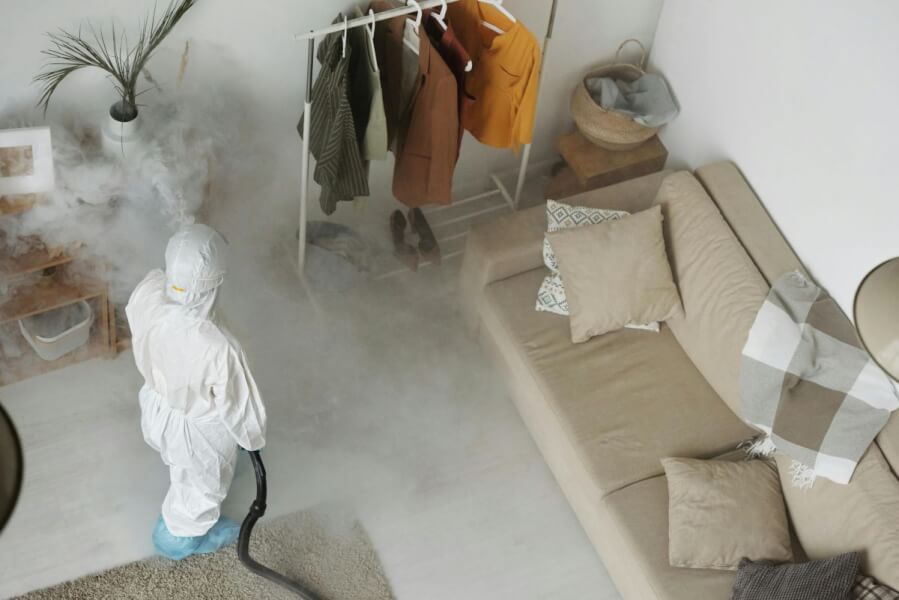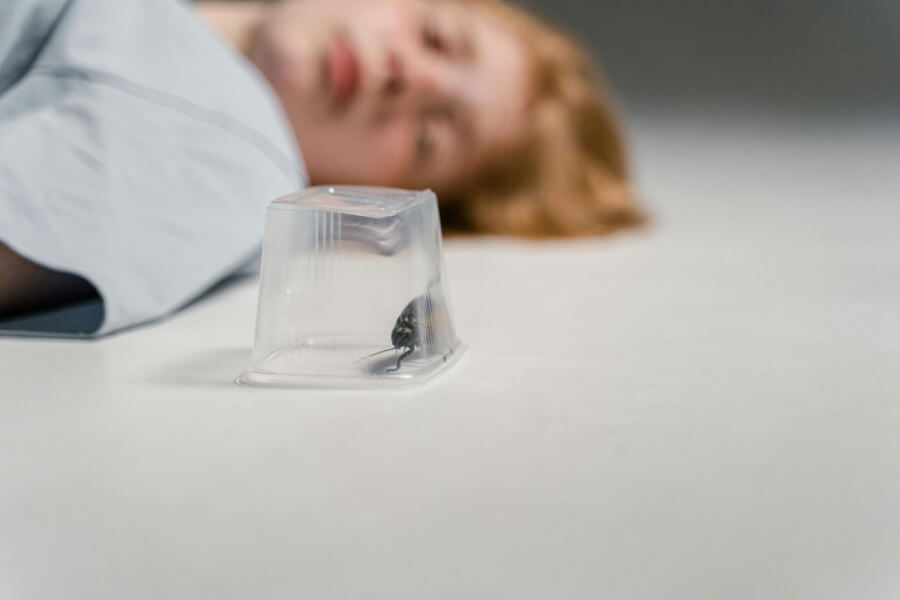Garages and storage areas in Kansas City often become pest hotspots. They are quiet, dark, and usually packed with items we rarely check. Rodents, spiders, ants, and cockroaches can move in easily. Once inside, they nest, breed, and damage belongings. Worse, they spread germs and create serious health concerns. Keeping storage spaces pest-free is not difficult if you focus on prevention. Small changes in cleaning and storage can stop pests before they start. With steady habits, you can protect your space and keep it safe year-round.
TL;DR: Storage Spaces Pest-Free
Garages and storage areas attract pests because they’re dark, cluttered, and often overlooked. The best defense is prevention: seal cracks, store items in sealed plastic bins, reduce clutter, fix leaks, clean regularly, and inspect often. Natural repellents and professional help are backups if needed.
Identify The Weak Points: Where Pests Get In
Pests always look for the easiest way inside. Small cracks and gaps are often enough for them to slip through. Garage doors with worn weatherstripping are common entry points. Even a gap as thin as a pencil is enough for mice.
Related Links
- How To Get Rid Of Mice In Your Storage Unit
- Simple DIY Home Improvement Projects To Tackle This Summer
- How To Find Where Mice Are Getting Into Your House
- Top Tips For Maintaining A Pest-Free Home After Relocating
- How To Get Rid Of Rats In Your Yard
Windows also loosen over time, creating little spaces that insects use. Vents and utility lines often have openings around them as well. As a matter of fact, many infestations start in these overlooked areas.
It helps to look for signs of entry. Droppings in corners, gnaw marks on boxes, or shredded paper are clues. If you notice these, pests may already be nesting nearby. Early detection saves time and effort later.
Smart Storage Choices That Repel Pests
How you store items affects pest activity. Cardboard boxes attract insects and rodents because they are easy to chew. Switch to durable plastic bins with tight lids. These protect your belongings and block pests at the same time.
Food storage is another big issue. Pet food, birdseed, and lawn seed should never sit in open bags. Seal them in heavy containers with lids. Another key point is always to keep these off the ground. Shelving units help reduce pest access and make cleaning simpler.
Clutter is also a problem. Old fabric, paper, or rugs attract moths and roaches. Store these inside sealed bins or get rid of them. Fewer loose items mean fewer hiding spots. Smart storage keeps pests from finding shelter or food.

Seal the Entry Points Before Pests Settle
Once you find weak points, seal them right away. Use silicone caulk to close cracks around windows, doors, and baseboards. Strong weatherstripping helps block air gaps under garage doors. Steel wool works best for holes around pipes because rodents cannot chew through it.
Vents are another concern. Cover them with fine mesh screens so pests stay out while airflow continues. With this in mind, inspect your garage foundation too. Fill any cracks quickly to stop insects from traveling in.
Door seals wear down over time, especially in high-use garages. Replace them if you see daylight or feel drafts coming through. In short, every sealed gap is one less chance for pests to invade.
An organized space also helps reveal entry points faster. When items are piled high and scattered, pests can hide unnoticed. Clear floors and neatly arranged shelves make it easier to see walls and corners. This way, you can detect cracks, gnaw marks, or droppings before they spread.
Think of your garage layout as a tool for prevention. There are many smart ways to organize it, such as using clear bins, open shelving, and labeled containers. These steps reduce clutter and highlight potential problem areas. When the space is tidy, spotting pest activity becomes much simpler.
A well-organized garage works hand in hand with sealing efforts. Together, they make your storage spaces pest-free and easier to maintain in the long run.
Deep Cleaning That Actually Works
Cleaning makes a huge difference. Sweep and vacuum floors often to remove crumbs, webs, and small debris. Rodents and insects thrive on even tiny food scraps. Dispose of garbage promptly instead of leaving bags in the garage.
Recycling bins should always be clean and dry. Sticky soda cans or damp cardboard invite pests quickly. Wipe up spills, oil leaks, and food residue immediately. Besides, oil and grease smells attract ants and roaches fast.
Clutter control is just as important. Old boxes, newspapers, or unused items provide nesting spots. Regularly sort through your storage and clear what you no longer need. A tidy garage is easier to clean and much less inviting to pests.

Control Moisture To Discourage Pests
Many pests seek moisture. Leaks from pipes, water heaters, or roofs create damp areas perfect for infestations. Fix leaks as soon as you notice them. Even small drips can encourage pests to stay.
A damp garage can benefit from a dehumidifier. This keeps the air dry and less attractive to insects. Good airflow also helps—open windows or vents when possible, especially during dry days.
Check drainage around your garage. Water pooling near the foundation can seep inside. Similarly, clogged gutters or downspouts push water toward walls. Redirect water away to keep the space dry. Dry conditions make pests uncomfortable and force them to leave.
Natural Deterrents And Safe Repellents
Natural repellents can add another layer of protection. Peppermint oil is a simple option. Spray it along walls and corners to deter spiders and rodents. The smell keeps them away.
Cedar chips help keep moths and silverfish out of stored fabrics. Sprinkle them in storage bins or place them in corners. Diatomaceous earth is useful against crawling insects. Spread a thin layer along baseboards and entry points. It is safe for pets and people.
Ultrasonic devices are also available. They release high-pitched sounds that pests dislike. Nevertheless, their results vary depending on garage size and setup. Use them as support, not as your only defense.
Regular Inspections and Monitoring
Consistent inspections help you stay ahead of pests. Check walls, corners, and bins every month. Look for droppings, chewed materials, or webs. Glue traps are excellent for spotting early insect activity.
Watch for seasonal changes in pest behavior. As an illustration, ants are common in spring, while spiders increase in fall. Mice often seek shelter as winter approaches.
Quick action during inspections prevents larger infestations. Regular checks also help confirm that your sealing, cleaning, and storage strategies are working. Staying alert saves money and effort in the long run.
When To Call A Professional Exterminator
Some problems require expert help. Large rodent infestations are very hard to control alone. If pests have moved into walls or ceilings, professionals are needed.
Certain pests are dangerous. Wasps, hornets, or black widows require special handling. In contrast, trying to remove them without proper gear can be risky. A licensed exterminator has the right tools and training.
Professional pest control services also prevent future problems. Many offer routine treatments to block common pests year-round. If you feel the situation is beyond control, calling an expert is the safest step.

Summary: Simple Steps To Keep Storage Spaces Pest-Free Long-Term
Pests in garages and storage areas cause more harm than many expect. They damage belongings, spread germs, and create constant frustration. Yet, the solution is usually simple prevention.
Seal gaps, choose smart storage, and keep the space clean. Reduce moisture, use natural repellents, and check regularly for problems. Of course, call a professional if the situation becomes too serious.
In short, anyone can keep storage spaces pest-free with steady habits and attention to detail. Consistency is the key. With the right steps, your garage can stay clean, dry, and pest-free year after year.
Key Takeaways: Storage Spaces Pest-Free
- Even tiny gaps invite pests—seal doors, windows, vents, and utility openings.
- Use plastic bins with tight lids instead of cardboard boxes.
- Keep food (including pet food and seed) sealed and off the ground.
- Reduce clutter to limit hiding spots and make inspections easier.
- Fix leaks and use dehumidifiers to eliminate moisture.
- Natural repellents (peppermint oil, cedar, diatomaceous earth) add extra protection.
- Inspect monthly and take seasonal pest behavior into account.
- Call a professional for infestations, dangerous pests, or recurring issues.
FAQs: Keeping Garages & Storage Spaces Pest-Free
Q1: What pests are most common in garages and storage areas?
A: Rodents, spiders, ants, cockroaches, moths, and silverfish are the most frequent invaders.
Q2: What’s the easiest way to prevent pests from getting inside?
A: Sealing entry points (cracks, gaps, vents, and door seals) is the most effective first step.
Q3: Are cardboard boxes safe for long-term storage?
A: No. Cardboard attracts pests and is easy to chew through. Use sealed plastic bins instead.
Q4: Can natural repellents really keep pests away?
A: Yes—peppermint oil, cedar, and diatomaceous earth deter many pests, though they work best as part of a bigger prevention plan.
Q5: When should I call a professional exterminator?
A: If you see large infestations, dangerous pests like wasps, or pests nesting inside walls or ceilings, professional help is the safest solution.
Be Sure To Check Out Some Of Our Services:
Termites — Rodents — Ants — Bed Bugs








